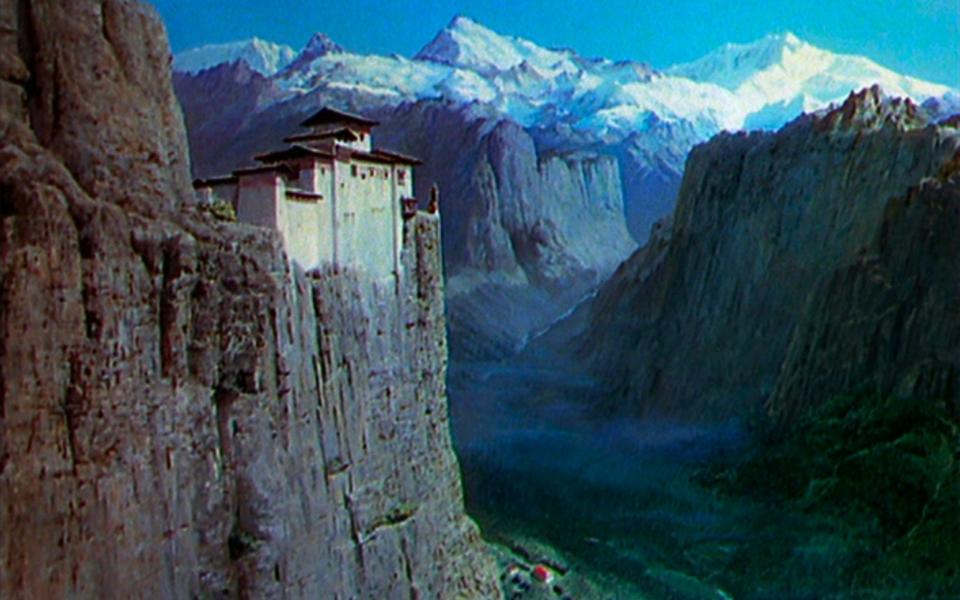Feverish dreams, delirious fantasies – the art of Powell and Pressburger

The Red Shoes (1948)

For the Archers’ delirious ballet fantasia, the style of Alfred Junge – who designed eight films for Powell and Pressburger – was deemed too stolid, and Hein Heckroth was given a double role, designing not only the costumes but also the sets. The trio of figures in the central “Freudian” ballet (above) – the Girl, the Boy and the Shoemaker – are posed with the Girl in a characteristic arabesque. Heckroth’s storyboards were actually used to create an animated plan for this sequence, and cut in advance to Brian Easdale’s music – a rare instance of going about things this way.

On set, the stills photographer Baron, aka Sterling Henry Nahum, captured Moira Shearer for this specially commissioned publicity portrait (above), which alludes to being a moment of cinema despite being staged specifically for a stills camera. History doesn’t record for how long Shearer had to hold this position, or how many times. It became a central image in the promotional campaign.
A Matter of Life and Death (1946)

A watercolour sketch of the outfit to be worn by David Niven’s character (above), the RAF pilot Peter Carter, in the Archers’ heavenly romance – with the layering of his pale blue shirt inside overalls for the opening scenes on the beach, but also a suggestion of the enveloping fur collar that will iconically define him later on. The film’s costume designer, making his debut with the team, was the German emigré Hein Heckroth, also a gifted painter, and later, Oscar-winning art director. His submitted designs would have been signed off by Powell and Pressburger before materials were chosen and tailored.
Black Narcissus (1947)

Black Narcissus was the last film Alfred Junge designed for Powell and Pressburger. Long before meeting them, Junge had a formidable resumé in German theatre and film, and had run the art department of Gaumont-British, the UK’s first large cinema chain. His ability to create worlds on a studio floor was legendary, and their artifice very conscious. The visual glories of this particular film hinged on a fruitful working relationship between Junge and the director of photography, Jack Cardiff, whose colour choices gave it a feverishly dreamlike quality – see the tiny splash of red in the misty valley below Mopu, the exact colour of Kathleen Byron’s lipstick (below).

Peeping Tom (1960)

The painter of this image (above), Ivor Beddoes, was an accomplished sketch artist who would wind up working on The Empire Strikes Back. He’d been a chorus boy, tap dancer and stretcher bearer before designing the titles and murals for Black Narcissus; by the dark thriller Peeping Tom, he was credited as the assistant art director. His vision in pre-production here doesn’t correlate to any one image from the film, but captures the dominant theme of voyeurism in a seedy, twilit London remarkably well, and helped influence the subsequent decisions made in set decorating and storyboarding. Beddoes glimpsed the whole film in a nutshell.
The images are taken from the book ‘The Cinema Of Powell and Pressburger’ (British Film Institute/ Bloomsbury Publishing,) which was published on Oct 5 and is part of a major BFI UK-wide celebration, Cinema Unbound: The Creative Worlds of Powell And Pressburger, with screenings and events taking place Oct 16-Dec 3; bfi.org.uk
